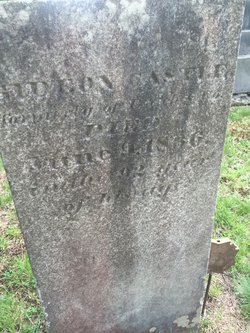Gideon CASTLE
SAR Patriot #:
P-130202
The following information was assembled from numerous sources and cannot be used directly as proof of Qualifying Service or Lineage.
It is considered a research aid and is intended to assist in locating sources that can be used as proof.
State of Service: NY
Qualifying Service: Private
DAR #: A020206
Birth: 23 Jul 1746 Woodbury / Fairfield / CT
Death: 09 Jun 1836 Schodack / Rensselaer / NY
Qualifying Service Description:
He served as a Private in the Company of Captain Daniel Shepard under the command of Colonels Southerland and Hopkins
Additional References:
- Rev War Pension File: S*W16526
- Roberts, James A, Comptroller, New York in the Revolution as Colony and State, 2nd ed. New York. Albany: Brandow Printing Company, 1898, pg 247
Spouse: Abigail Hurd
Children: Elijah;
Members Who Share This Ancestor
| Date Approved | Society | ACN | SAR Member Info | Lineage via Child | View Application Detail | |
|---|---|---|---|---|---|---|
| 1981-04-29 | AZ | Unassigned | Philip Mosher Fairchild (118467) | Elijah | ||
| 1981-10-20 | AZ | Unassigned | Paul Warner Fairchild (119272) | Elijah | ||
| 1981-10-29 | KS | Unassigned | Latham Castle (119313) | Elijah | ||
| 1981-11-24 | AZ | Unassigned | Edward Adams Mosher (119427) | Elijah | ||
| 1982-01-11 | KS | Unassigned | Chester Castle Walbridge (119616) | Elijah | ||
| 1982-02-25 | AZ | Unassigned | John Carpenter Mosher (119833) | Elijah | ||
| 1982-03-05 | TX | Unassigned | John Oliver Albright PhD (119889) | Elijah | ||
| 1982-12-27 | AZ | Unassigned | James Wallace Mosher (121412) | Elijah |
Location:
Nassau / Rensselaer / NY / USA
Find A Grave Cemetery #:
Marker Type:
Headstone
SAR Grave Dedication Date:
Comments:
- Patriot contemporary stone, upright, partially legible
- Image 1, provided with permission from Deborah Lyman, Find-A-Grave contributor # 48684503
- Notes on Find-A-Grave suggest he was originally buried at Hoag's Orchard cemetery, which no longer exists and the stone was moved
Directions to Cemetery / Gravesite:
New York Route 203 (Chatham Street) near intersection with Crossway Road
